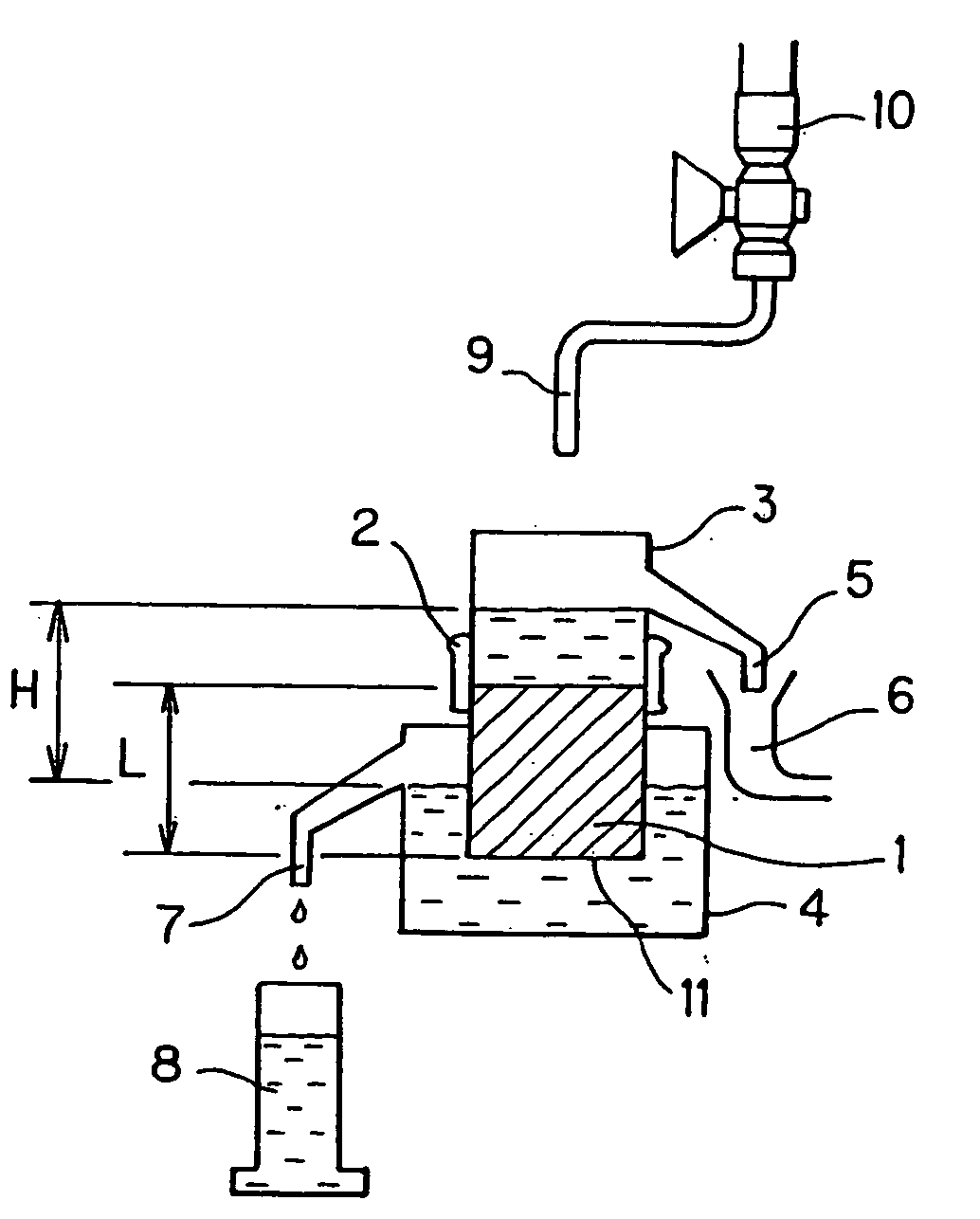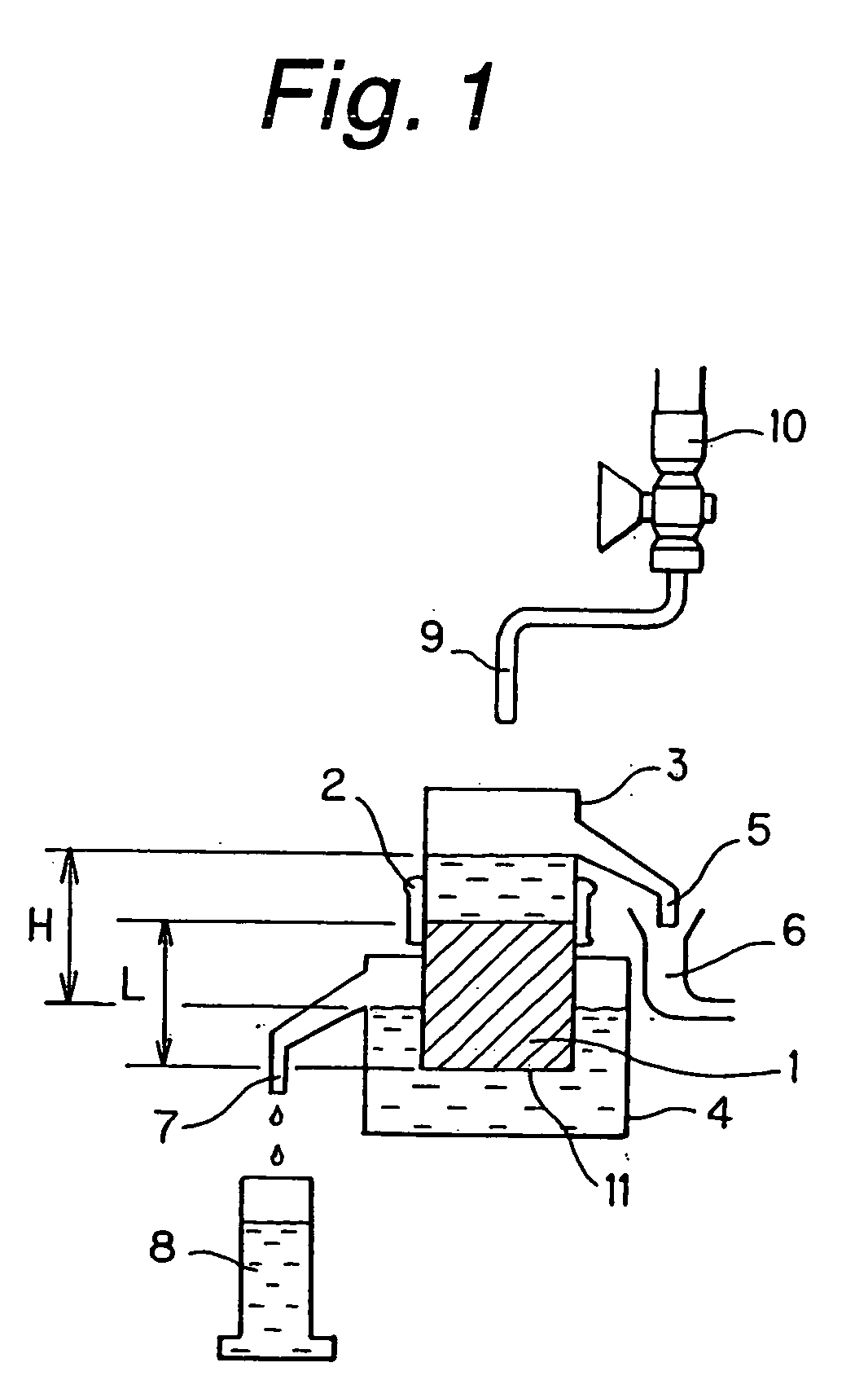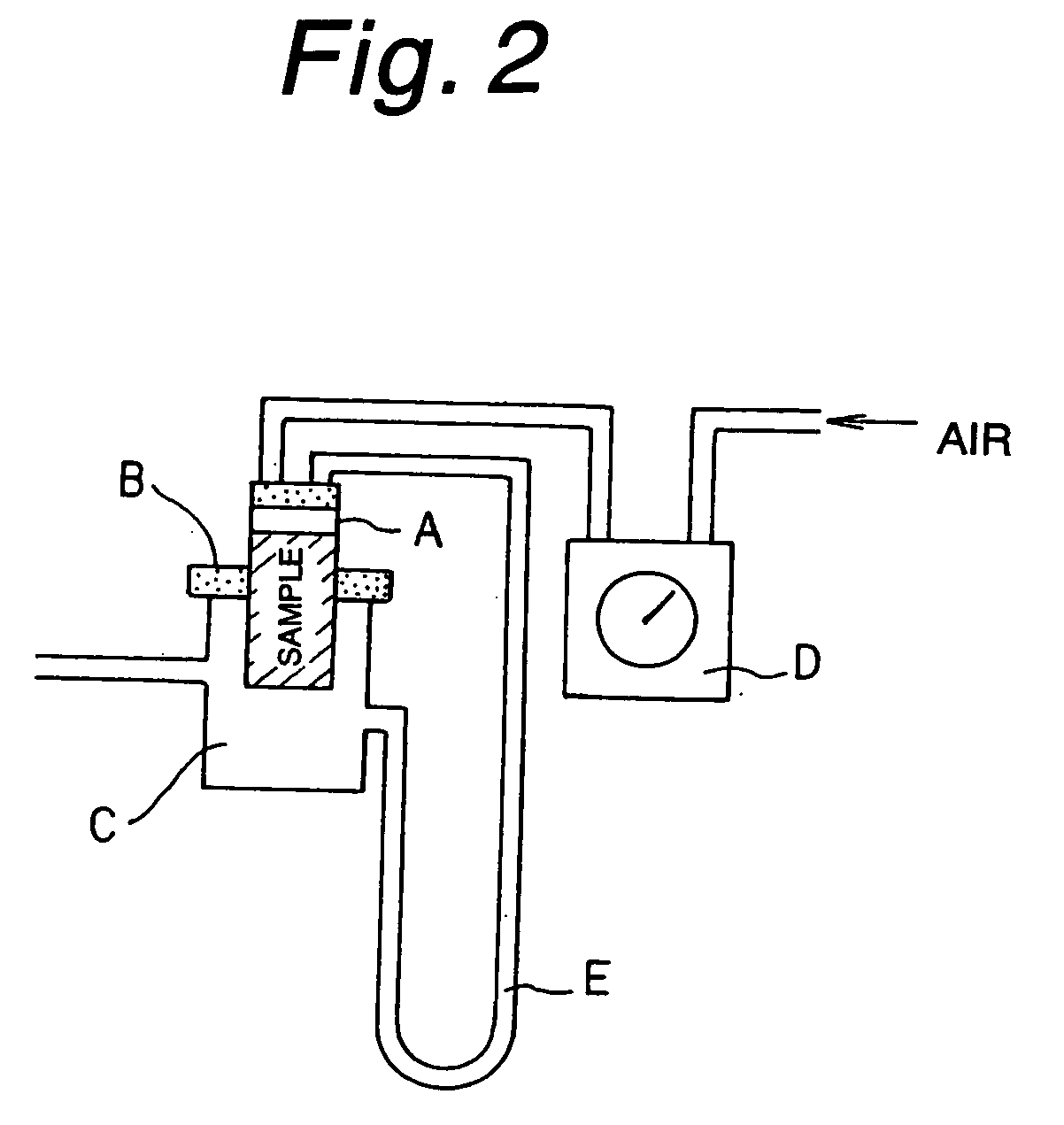Culture medium
a technology of medium and medium, applied in the field of culture medium, can solve the problems of difficult rooting of plants, cumbersome cultivation steps, low yield, etc., and achieve the effect of suppressing the growth of anaerobic microorganisms and excellent culture medium
- Summary
- Abstract
- Description
- Claims
- Application Information
AI Technical Summary
Benefits of technology
Problems solved by technology
Method used
Image
Examples
example 1
FIG. 5 shows in conceptual form the cultivator used in Example 1. A cultivation box 101 which was 450 mm wide by 1200 mm long was filled with an 80-mm deep bed of SHIRASU pumice 102 produced in Kagoshima Prefecture, Kyushu, Japan, and corn salad A was cultivated in July and August. The cultivation test was performed in Shizuoka Prefecture. The SHIRASU pumice 102 had been classified to sizes of 1.0-5.6 mm using a 5660-μm sieve and a 1000-μm sieve and dried at 250° C. for 4 hours in a heating furnace. The moisture content of the pumice was 0.2%. The pumice had a saturated water permeability of 3.4×10−1 cm / sec, air permeabilities of 19 cm / sec (dry sample) and 27 cm / sec (wet sample), and a cation exchange capacity of 3.4 meq / 100 g. Perforated irrigation pipes 104 were positioned horizontally over and across the culture box 101 and the SHIRASU pumice 102 was sprinkled with water as appropriate. Each irrigation pipe 104 had small holes 103 in the sidewall that were opened in a row at give...
example 2
A cultivation test was performed on mediums comprising a mixture of pumice and charcoal. The pumice was the same as the sample of SHIRASU pumice used in Example 1. Charcoal (charred coconut husk) was ground to sizes of 1-2 mm; the SHIRASU pumice was mixed with the particulate charcoal in varying weights to prepare the following six mediums: A (0% of charcoal); B (10%); C (20%); D (30%); E (40%); and F (50%). Corn salad was cultivated in each medium. Cultivation was performed in Okinawa Prefecture. Sowing was done at the end of May; at 17 days of the sowing, the seedlings were transplanted for setting and the crops were harvested 32 days later. Drip watering was performed continuously; the supply rate was 50 mL / plant during nursing of the seedlings and 60 mL / plant after transplantation. A liquid fertilizer was applied. From each of the mediums tested, 21 plants were harvested and the average weight of corn salad per plant excluding the root was determined. The results are shown in T...
example 3
A continuous cropping test was performed on mediums comprising a mixture of pumice and charcoal. The pumice was the same as the sample of SHIRASU pumice used in Example 1. Charcoal (charred coconut husk) was ground and classified to have the same size range as the SHIRASU pumice (1-5.6 mm); the SHIRASU pumice was mixed with the particulate charcoal in varying weights to prepare the following seven mediums: A (0% of charcoal); B (10%); C (20%); D (30%); E (50%); F (80%); and G (100%). A portion (800 g) of each mixed medium was sampled per pot, put into a 1-L Pyrex beaker and used as a medium for cultivating Brassica Rapa var. pervidis. Cultivation was performed in Shizuoka Prefecture. Ten days after sowing, the seedlings were transplanted for setting and about 30 days later, the crops were harvested. In this way, continuous cropping was done through ten cycles. The nutrient liquor used was based on river water and supplemented with necessary nutrients at substantially the same conce...
PUM
 Login to View More
Login to View More Abstract
Description
Claims
Application Information
 Login to View More
Login to View More - R&D
- Intellectual Property
- Life Sciences
- Materials
- Tech Scout
- Unparalleled Data Quality
- Higher Quality Content
- 60% Fewer Hallucinations
Browse by: Latest US Patents, China's latest patents, Technical Efficacy Thesaurus, Application Domain, Technology Topic, Popular Technical Reports.
© 2025 PatSnap. All rights reserved.Legal|Privacy policy|Modern Slavery Act Transparency Statement|Sitemap|About US| Contact US: help@patsnap.com



